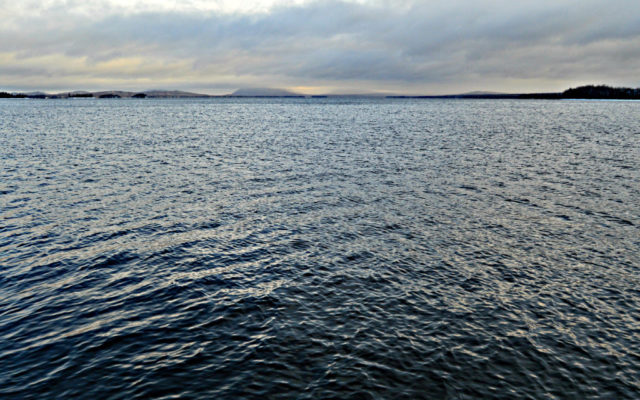
Moosehead Lake salmon fishery
A few weeks ago, I wrote about the lake trout population and what it took to get it under control. Of course, the main goal of thinning the small lake trout down was to improve growth for all our gamefish. Lake trout, salmon, and to a lesser extent, brook trout all feed on smelt. The small lake trout were so abundant that they were eating us out of house and home and all the gamefish suffered.
The good news is growth has improved greatly since “The Great Lake Trout Purge of 2008.” We’ve seen it in all of the species. Each fall, we trapnet hatchery salmon at the Greenville Junction Wharf. Mature salmon will home back to their natal stream, searching for a location to spawn. In the case of hatchery salmon, they return to the stocking site, especially if a stream is nearby.
We’ve been netting this site since the late 1960s, so we have a great dataset to compare trends in growth. We take lengths and weights on the fish. We clip a fin on our hatchery fish before they are stocked, so we know what year that fish went into the lake and how old it is when we check it in the trapnetting.
Most of the salmon sampled in our trapnetting operation are 2 and 3 years old. We like to see our age two salmon reach 16 inches by the time we trapnet them in the fall, and we have a goal of 18 inches for our age 3 fish. These are reasonable goals based on long-term averages for this specific lake. We have exceeded these goals for the past several years. In fact, we are seeing some of the best growth we’ve ever recorded on our Moosehead Lake salmon. Things are good right now.
Back in the mid-1990s, when growth was poor, we also noticed that the salmon catch was down, even though we were stocking quite a few fish. This was indicative of a decline in survival. When it’s hard to find food, fewer fish will survive the tough times. More stringent winter regulations were implemented during this period to try to improve the fishery.
Winter anglers were harvesting salmon at a much higher rate than the summer anglers and it was taking a toll on the summer fishery. Anglers were upset with the loss of the traditional spring salmon fishery. So, the 18-inch minimum length limit and the delayed opening to Feb. 15 helped to slow the winter harvest and “push” some of those salmon into the open water season. Retired Fisheries Biologists Paul Johnson and Scott Roy did the heavy lifting in terms of data analysis and regulation development for improving the salmon fishery. There was some give and take and the end result has worked very well. I think we would all agree that the spring/summer salmon fishing has been great and it continues to improve.
We hoped that the recent improvement in salmon growth would also result in better survival and it has. From 1995 to 2000, we estimated annual survival for salmon was just 19 percent. But, since the thinning of the lake trout, salmon survival is estimated at 43 percent. That is great news. Better survival means more fish to catch. It could also translate to older and larger fish in the fishery, if anglers don’t harvest the salmon at younger ages. In fact, our estimates for angler exploitation have been lower in recent years.
Anglers are releasing more fish in the summer and the protective regulations in the winter help improve survival. In the past, we would typically see just a few 4-year-old salmon in our trapnetting. Most years, it is less than 10 percent of the total catch. In 2019, age 4 salmon represented 22 percent of the sample, the highest we’ve recorded since 1980. These 4-year-old salmon averaged 20 inches. We also had one 6-year-old salmon in the trapnet this fall. We hope this is the beginning of a trend toward more older and larger salmon in the fishery. You may want to use some heavier fishing line this spring.